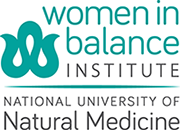 Cardiovascular disease is a leading cause of death in the United States, and women are at a particularly higher risk of having a heart attack or suffering from coronary heart disease than men.. In the U.S. alone it is estimated that 39 percent of women will develop cardiovascular disease by age 50.
Cardiovascular disease is a leading cause of death in the United States, and women are at a particularly higher risk of having a heart attack or suffering from coronary heart disease than men.. In the U.S. alone it is estimated that 39 percent of women will develop cardiovascular disease by age 50.
Some risk factors that contribute to the development of cardiovascular disease (CVD) are:
- Aging
- High blood pressure
- Elevated triglyceride, LDL, and cholesterol levels
- Smoking
- Oral birth control use
- Diabetes
- Obesity
- Sedentary lifestyle
Race and ethnicity have been shown to play into the prevalence as well. Studies show that women of African descent have the highest rates of CVD, followed by white women, and lastly, Hispanic women.
Socioeconomic status and geography also have a large impact on a person’s risk of developing cardiovascular disease. Women of a lower socioeconomic status and those living in the southern states are at greater risk of CVD, due to increased rates of obesity, high blood pressure and diabetes.
So what can we do as women to lessen our risk of CVD and increase our overall quality of life?
Eating a whole food diet with a surplus of leafy greens and antioxidant rich foods and making sure to get adequate sleep and EXERCISE are important factors in increasing heart health.
Exercise is one of the key cornerstones of a healthy lifestyle. Current recommendations include 125 minutes per week or 30 minutes per day of moderate exercise OR 75 minutes per week of vigorous aerobic exercise AND moderate muscle strengthening exercises two times per week.
Here are some examples of both moderate and vigorous exercises:
Moderate:
- Brisk walking (3 miles an hour or faster)
- Water aerobics
- Bicycling less than 10 miles per hour
- Tennis (doubles)
- Dancing
- Gardening (not strenuous)
- Hiking with little to no incline
Vigorous:
- Race walking, jogging or running
- Swimming laps
- Tennis (singles)
- Aerobic dancing
- Jumping rope
- Gardening involving digging or hoeing
- Hiking uphill or with a heavy pack.
It is important when adding exercise into your daily life to measure your resting heart rate (average 60-80 beats per minute) and also calculate your maximum heart rate (220 minus your age). An ideal target heart rate is 85 percent of your maximum heart rate (MHR) and should be reached by starting with 50 percent of your MHR and building up intensity over time. Use the American Heart Association’s Target Heart Rate chart to help find your MHR.
Remember to always see a licensed healthcare provider for cardiovascular screening and management.
More information on exercise can be found on the American Heart Association website: American Heart Association
Written By Michelle Williams, NCNM Naturopathic Medicine Program. Edited by Dr. Elise Schroeder
References:
“American Heart Association Recommendations for Physical Activity in Adults.” American Heart Association Recommendations for Physical Activity in Adults. American Heart Association, 05 Jan. 2015. Web. 06 Feb. 2015. <http://www.heart.org/HEARTORG/GettingHealthy/PhysicalActivity/FitnessBasics/American-Heart-Association-Recommendations-for-Physical-Activity-in-Adults_UCM_307976_Article.jsp>.
Coulter, Stephanie A., MD. “Epidemiology of Cardiovascular Disease in Women.” Texas Heart Institute Journal 38.2 (2011): 145-47. NCBI. Web. 1 Feb. 2015.
“Heart Healthy Exercises – Go Red For Women.” Go Red For Women Heart Healthy Exercise Comments. American Heart Association, n.d. Web. 06 Feb. 2015. <https://www.goredforwomen.org/home/live-healthy/exercise/>.
“Moderate to Vigorous – What Is Your Level of Intensity?” Moderate to Vigorous – What Is Your Level of Intensity? American Heart Association, 10 Sept. 2015. Web. 06 Feb. 2015. <http://www.heart.org/HEARTORG/GettingHealthy/PhysicalActivity/FitnessBasics/Moderate-to-Vigorous—What-is-your-level-of-intensity_UCM_463775_Article.jsp>.
“Target Heart Rates.” Target Heart Rates. American Heart Association, 8 Jan. 2015. Web. 01 Feb. 2015. <http://www.heart.org/HEARTORG/GettingHealthy/PhysicalActivity/FitnessBasics/Target-Heart-Rates_UCM_434341_Article.jsp>.

